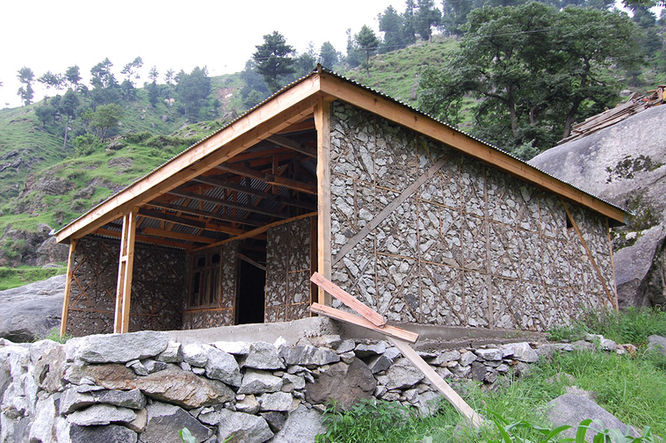Awareness raising material
Awareness raising material
Awareness raising material
Awareness raising material
Awareness raising material
seismico

Dhajji / Hımış
The dhajji and himis systems consist of highly subdivided timber frames with stone or brick infills. The primary structural elements are generally thinner than those of their European cousins (colombage, Fachwerk). The secondary sub-divisions are made of board-sized short pieces nailed to the primary elements. The subdivision patterns can vary from stiff cross-bracings to ever more ductile zig-zag, chevron, fishtail or random
assemblies. While the cross-bracing assembly has been well studied and modelised (importance of vertical connection/anchoring), the more ductile patterns have not received the same attention. Yet, these latter patterns make better use of the infills. In fact, the stones or bricks should be placed in mud mortar to ensure that the infill can deform and thus work as a damper dissipating energy.








Manuals
Dhajji construction for one and two storey earthquake resistant houses: A guidebook for technicians and artisans, by Tom Schacher and Prof. Dr. Qaisar Ali, National Disaster Management Authority NDMA Pakistan, University of Engineering and Technology Peshawar, UN-Habitat Pakistan, Scuola Universitaria Professionale della Svizzera italiana SUPSI, 2009,
in ENGLISH
Construction en ossature bois et remplissage en maçonnerie: bâtiments parasismiques et paracycloniques à 1 ou 2 niveaux - Guide technique , par Florie Dejeant, Entrepreneurs du monde en collaboration avec CRAterre, Haiti 2012
in FRENCH
Lessons
Basic training on Dhajji construction (PowerPoint lesson), by Tom Schacher, SDC, Earthquake Reconstruction and Rehabilitation Authority ERRA Pakistan, UN-Habitat Pakistan, 2006,
in ENGLISH
Dhajji construction "hand-around" ("hand-around" are plastified A4 pages to hand around in lessons without PowerPoint presentations, that is, in remote villlages), by Tom Schacher, SDC-Pakistan, 2006
in ENGLISH
Models
Timber joints in Dhajji construction (Instructions on how to prepare scale models of timber joints for the training in remote villages accessible only by foot), by Tom Schacher, SDC-Pakistan, 2006
in ENGLISH
Dhajji construction: full-scale sectionised model (to be built in training facilities or public spaces for people to see and study), yy Tom Schacher, SDC-Pakistan, 2007
in ENGLISH






























